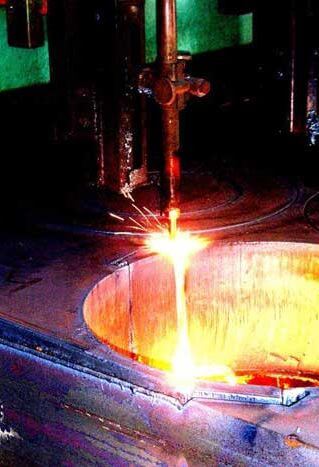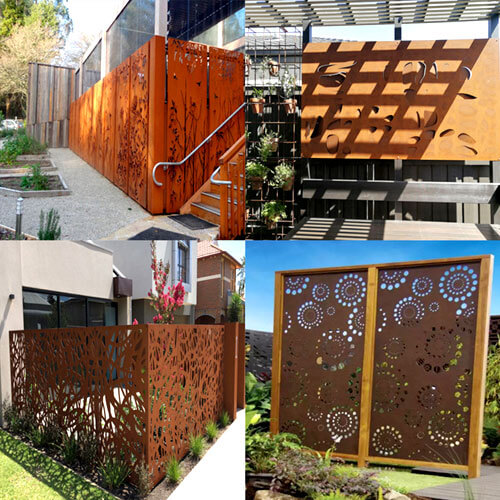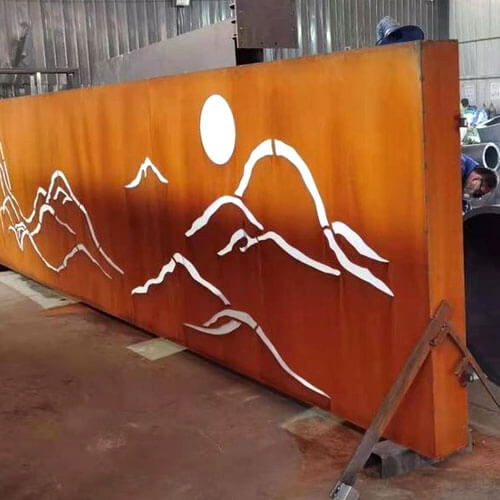Welding method for thin plate welding
The welding of the base layer is recommended to use manual arc welding, submerged arc welding, and carbon dioxide gas shielded welding.
The welding of multiple layers and excessive layers adopts argon tungsten arc welding and manual arc welding, and other welding methods that can ensure the welding quality can also be used.
When the conditions are limited, the cladding layer can also be welded first, and then the transition layer and the base layer. In this case, if the thickness of the composite plate is less than 10mm, the welding material of the base layer can be directly selected from the same welding material as the transition layer. If the composite plate If the thickness is greater than 10mm, the welding thickness of the transition layer can be appropriately increased (the welding thickness of the transition layer should be greater than or equal to 5mm), and finally the carbon steel or low alloy welding base.
Welding should first weld the base layer, then weld the transition layer, and finally weld the complex layer.
Welding sequence for sheet welding
Welding should first weld the base layer, then weld the transition layer, and finally weld the complex layer.
1. Welding of the base layer
The welding bead of the base layer must not touch and melt the composite material. When the base material is welded first, the root or surface of the weld bead should be 1-2mm away from the composite interface.
The weld reinforcement shall comply with the relevant standards. Depending on factors such as substrate thickness, steel type, and structure, appropriate preheating treatment can be used if necessary.
2. Welding of transition layer
When welding the transition layer, under the premise of ensuring good fusion, it is necessary to minimize the amount of fusion of the base material and reduce the fusion ratio.
For this purpose, a smaller diameter electrode or wire and a lower welding input energy should be used.
The thickness of the transition layer should not be less than 2mm.
3. Multi-layer welding
When welding the cladding, care should be taken to protect the surface of the cladding to prevent welding spatter from damaging the surface of the cladding, and it is not allowed to randomly strike arcs, weld kallans, lifting rings and temporary supports on the cladding surface.
The surface of the clad weld seam shall be as flat and smooth as possible with the clad surface.
Butt weld reinforcement shall not be greater than 1.5mm.
Welding precautions for thin plate welding
1. Because the plate is thin, it is easy to produce welding deformation, and it is easy to produce wavy deformation for long welds. Therefore, the welding process must be strictly followed during welding, especially the welding current must be strictly controlled (in the case of ensuring penetration) The welding current should be as small as possible) and the welding sequence.
The welder should check the misalignment of the groove before welding, and the welding can only be performed after the misalignment is qualified.
For the girth welds of tanks with larger diameters, symmetrical welding and segmental welding should be carried out as much as possible.
2. The back of the weld of all manual argon arc welding must be protected with Ar.
For spot welds (especially easy to produce incomplete fusion and incomplete penetration), welding requires the same requirements as welds and should be penetrated as much as possible at one time, otherwise it should be ground before welding.
If the volume of the tank is large, you can first fill the tank with a part of water according to the schematic diagram and then inflate it to save argon.
3. For some tanks without manholes, try to weld the accessories (such as connecting pipes and backing plates, etc.) on the tank that require double-sided welding or gas protection on the back before welding the seams.
4. When welding the accessories on the welded shell, such as lifting lugs, backing plates and support bars, etc., they should be welded according to the minimum welding foot size, and water should be poured on the back of the welding seam as far as possible to reduce deformation.
5. When there are many accessories to be welded on the shell, it should be spot welded first and then welded, and the reinforcing rib should be welded according to the situation.
6. Plasma or grinding wheel cutting should be used when removing the arc striker, arc back plate and reinforcing rib, and it is not allowed to knock it off forcefully.

 Steel Plate
Steel Plate steel pipe
steel pipe Stainless steel
Stainless steel
 English
English Spanish
Spanish Russian
Russian Portuguese
Portuguese Section steel
Section steel carbon steel plate
carbon steel plate Steel plate processing
Steel plate processing steel coil
steel coil steel rod
steel rod
 Home
Home





























